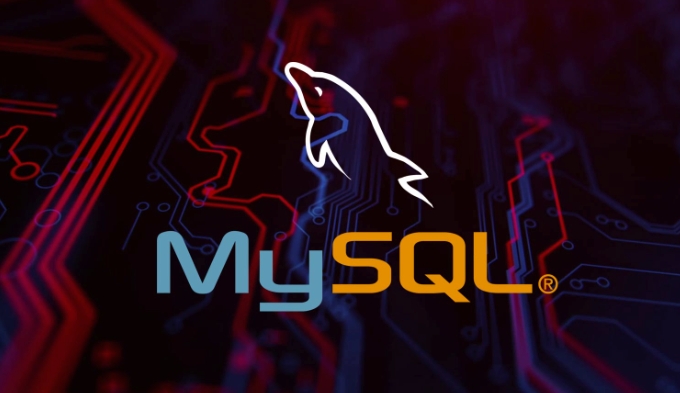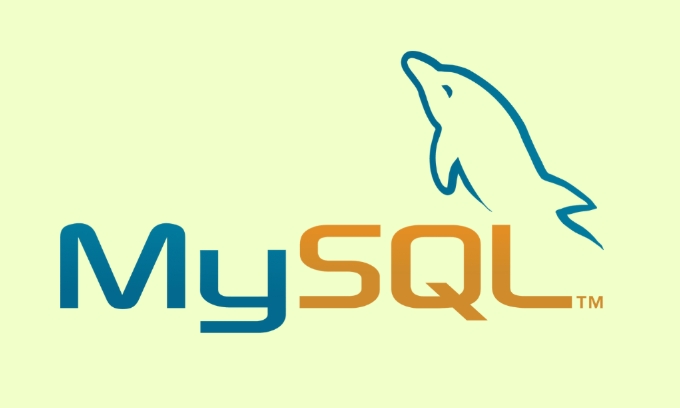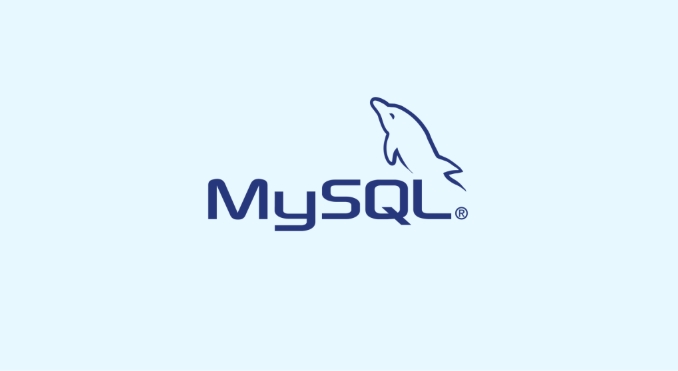Using the MySQL Shell for administration and scripting
Jul 13, 2025 am 02:43 AMThe method of connecting to the database by MySQL Shell is to use the mysqlsh command to start and enter connection information, or directly specify user@host:port on the command line; 1. The startup method is flexible, supports interactive input or directly specifying parameters; 2. Pay attention to SSL settings and authentication methods, especially when remote connections, to ensure correct permissions and passwords; 3. After entering the shell, the default is SQL mode, which can perform regular SQL operations; 4. Support switching to JS or Python mode to write complex scripts to achieve automated tasks; 5. Script writing requires attention to mode selection, output format, exception handling and file saving; 6. Provide practical tips, such as viewing the current mode, switching paths, multi-instance connections, and consulting help documents, which help solve common problems.

MySQL Shell is a powerful tool that can not only be used to manage databases, but also write scripts to automate operations. If you have used traditional MySQL client before, you may think it is a bit different, but it is actually more flexible to use.

How to connect to the database?
The first step with MySQL Shell is to connect to the database instance. You can start with the mysqlsh command and enter the connection information. You can also specify it directly on the command line:

mysqlsh user@host:port
Remember to confirm whether SSL is used and whether the authentication method is correct when connecting, especially when connecting to a remote server. If the password is incorrect or the permissions are insufficient, the Shell will prompt an error. At this time, you need to check the user permissions and access control settings.
Common commands for managing databases
After entering the shell, the default is SQL mode, and you can execute SQL statements like you normally do. For example, check the current database, user, table structure, etc.:

\sql USE mydb; SHOW TABLES; DESCRIBE mytable;
However, MySQL Shell also supports JavaScript and Python modes, which are suitable for batch operations or scripting. For example, switch to JS mode:
\js
Then you can write some simple logic, such as traversing all databases:
session.runSql("SHOW DATABASES;");
var result = session.fetchAll();
result.forEach(function(row) { print(row[0]); });This way you can write scripts in the shell for tasks such as data collection, status checking, etc.
Script writing tips and precautions
If you plan to write automation scripts using MySQL Shell, there are a few things to note:
- Pattern selection : JS and Python patterns are more suitable for writing scripts with complex logic, while SQL patterns are suitable for simple queries.
- Output format : The default output is in table form. It is recommended to change it to JSON or silent mode in the script to facilitate subsequent processing.
- Exception handling : The script will not automatically exit when an error occurs when it runs. It is best to add try-catch or judge the return value.
- Save script files : You can save common scripts as
.jsor.pyfiles and load and execute them with thesourcecommand.
For example, you can write a script to check the master-slave copy status:
try {
var res = dba.getReplicaSet().status();
print("Replication status:", res.ok);
} catch (e) {
print("Error checking replication:", e);
}Such scripts can be run regularly and used together with the monitoring system.
Tips and FAQs
Sometimes you will encounter some strange problems, such as the shell prompts "Session not active" or "Command not found", which is usually because the pattern is not correct or the syntax is incorrect. A few tips to remember:
- You can use
\statusto view the current mode - Switch mode with
\sql,\jsor\py - Pay attention to the difference between relative and absolute paths for script path issues
- When connecting multiple instances, use
\\connectto switch context
In addition, the Shell help document is actually quite complete. Enter \help or function name and add .help() to quickly check the usage.
Basically all this is it. MySQL Shell has many functions, but after mastering the basic operations, you will find that it is much better than traditional clients.
The above is the detailed content of Using the MySQL Shell for administration and scripting. For more information, please follow other related articles on the PHP Chinese website!

Hot AI Tools

Undress AI Tool
Undress images for free

Undresser.AI Undress
AI-powered app for creating realistic nude photos

AI Clothes Remover
Online AI tool for removing clothes from photos.

Clothoff.io
AI clothes remover

Video Face Swap
Swap faces in any video effortlessly with our completely free AI face swap tool!

Hot Article

Hot Tools

Notepad++7.3.1
Easy-to-use and free code editor

SublimeText3 Chinese version
Chinese version, very easy to use

Zend Studio 13.0.1
Powerful PHP integrated development environment

Dreamweaver CS6
Visual web development tools

SublimeText3 Mac version
God-level code editing software (SublimeText3)

Hot Topics
 What is the default username and password for MySQL?
Jun 13, 2025 am 12:34 AM
What is the default username and password for MySQL?
Jun 13, 2025 am 12:34 AM
The default user name of MySQL is usually 'root', but the password varies according to the installation environment; in some Linux distributions, the root account may be authenticated by auth_socket plug-in and cannot log in with the password; when installing tools such as XAMPP or WAMP under Windows, root users usually have no password or use common passwords such as root, mysql, etc.; if you forget the password, you can reset it by stopping the MySQL service, starting in --skip-grant-tables mode, updating the mysql.user table to set a new password and restarting the service; note that the MySQL8.0 version requires additional authentication plug-ins.
 What is GTID (Global Transaction Identifier) and what are its advantages?
Jun 19, 2025 am 01:03 AM
What is GTID (Global Transaction Identifier) and what are its advantages?
Jun 19, 2025 am 01:03 AM
GTID (Global Transaction Identifier) ??solves the complexity of replication and failover in MySQL databases by assigning a unique identity to each transaction. 1. It simplifies replication management, automatically handles log files and locations, allowing slave servers to request transactions based on the last executed GTID. 2. Ensure consistency across servers, ensure that each transaction is applied only once on each server, and avoid data inconsistency. 3. Improve troubleshooting efficiency. GTID includes server UUID and serial number, which is convenient for tracking transaction flow and accurately locate problems. These three core advantages make MySQL replication more robust and easy to manage, significantly improving system reliability and data integrity.
 What is a typical process for MySQL master failover?
Jun 19, 2025 am 01:06 AM
What is a typical process for MySQL master failover?
Jun 19, 2025 am 01:06 AM
MySQL main library failover mainly includes four steps. 1. Fault detection: Regularly check the main library process, connection status and simple query to determine whether it is downtime, set up a retry mechanism to avoid misjudgment, and can use tools such as MHA, Orchestrator or Keepalived to assist in detection; 2. Select the new main library: select the most suitable slave library to replace it according to the data synchronization progress (Seconds_Behind_Master), binlog data integrity, network delay and load conditions, and perform data compensation or manual intervention if necessary; 3. Switch topology: Point other slave libraries to the new master library, execute RESETMASTER or enable GTID, update the VIP, DNS or proxy configuration to
 How to change or reset the MySQL root user password?
Jun 13, 2025 am 12:33 AM
How to change or reset the MySQL root user password?
Jun 13, 2025 am 12:33 AM
There are three ways to modify or reset MySQLroot user password: 1. Use the ALTERUSER command to modify existing passwords, and execute the corresponding statement after logging in; 2. If you forget your password, you need to stop the service and start it in --skip-grant-tables mode before modifying; 3. The mysqladmin command can be used to modify it directly by modifying it. Each method is suitable for different scenarios and the operation sequence must not be messed up. After the modification is completed, verification must be made and permission protection must be paid attention to.
 How to connect to a MySQL database using the command line?
Jun 19, 2025 am 01:05 AM
How to connect to a MySQL database using the command line?
Jun 19, 2025 am 01:05 AM
The steps to connect to the MySQL database are as follows: 1. Use the basic command format mysql-u username-p-h host address to connect, enter the username and password to log in; 2. If you need to directly enter the specified database, you can add the database name after the command, such as mysql-uroot-pmyproject; 3. If the port is not the default 3306, you need to add the -P parameter to specify the port number, such as mysql-uroot-p-h192.168.1.100-P3307; In addition, if you encounter a password error, you can re-enter it. If the connection fails, check the network, firewall or permission settings. If the client is missing, you can install mysql-client on Linux through the package manager. Master these commands
 How does InnoDB implement Repeatable Read isolation level?
Jun 14, 2025 am 12:33 AM
How does InnoDB implement Repeatable Read isolation level?
Jun 14, 2025 am 12:33 AM
InnoDB implements repeatable reads through MVCC and gap lock. MVCC realizes consistent reading through snapshots, and the transaction query results remain unchanged after multiple transactions; gap lock prevents other transactions from inserting data and avoids phantom reading. For example, transaction A first query gets a value of 100, transaction B is modified to 200 and submitted, A is still 100 in query again; and when performing scope query, gap lock prevents other transactions from inserting records. In addition, non-unique index scans may add gap locks by default, and primary key or unique index equivalent queries may not be added, and gap locks can be cancelled by reducing isolation levels or explicit lock control.
 How to alter a large table without locking it (Online DDL)?
Jun 14, 2025 am 12:36 AM
How to alter a large table without locking it (Online DDL)?
Jun 14, 2025 am 12:36 AM
Toalteralargeproductiontablewithoutlonglocks,useonlineDDLtechniques.1)IdentifyifyourALTERoperationisfast(e.g.,adding/droppingcolumns,modifyingNULL/NOTNULL)orslow(e.g.,changingdatatypes,reorderingcolumns,addingindexesonlargedata).2)Usedatabase-specifi
 Why do indexes improve MySQL query speed?
Jun 19, 2025 am 01:05 AM
Why do indexes improve MySQL query speed?
Jun 19, 2025 am 01:05 AM
IndexesinMySQLimprovequeryspeedbyenablingfasterdataretrieval.1.Theyreducedatascanned,allowingMySQLtoquicklylocaterelevantrowsinWHEREorORDERBYclauses,especiallyimportantforlargeorfrequentlyqueriedtables.2.Theyspeedupjoinsandsorting,makingJOINoperation






